Trigonometric Identities (TI) and its Derivation
Trigonometric identities: A brief description on Trigonometry and Trigonometric Ratios has been provided on the website link Trigonometric Ratios.
Now, let us know about TI and its Derivation.
Basically, there are 3(three) Trigonometric identities viz.,
- cos2θ + sin2θ = 1
- 1+ tan2θ = sec2θ
- 1 + cot2θ = cosec2θ
In order to derive these three Trigonometric Identities, let us consider a Right-angled triangle, △ABC right angled at A that is ∠BAC = 90°
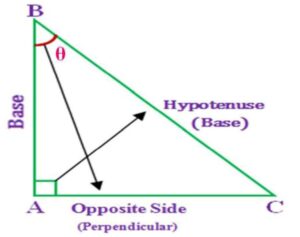
According to Pythagoras Theorem, we know that in a Right-angled triangle, the sum of the square of the Hypotenuse (Longest Side of the right-angled triangle) is equal to the sum of the squares of the other two sides.
(Perpendicular)2 = (Perpendicular)2 + (Base)2
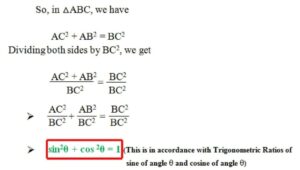
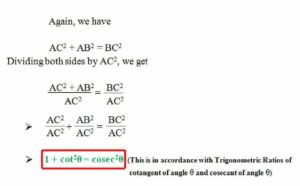
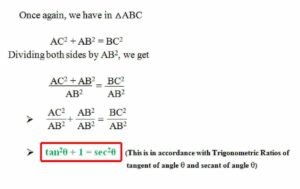
Hence, 3(three) Derived Trigonometric Identities, mentioned above are:
1) cos2θ + sin2θ = 1
2) 1+ tan2θ = sec2θ
3) 1 + cot2θ = cosec2θ
From 1), we have
(a) cos2θ = 1 – sin2θ
(b) sin2θ = 1 – cos2θ
From 2), we have
(a) sec2θ – tan2θ = 1
(b) tan2θ = sec2θ – 1
From 3), we have
(a) cosec2θ – cot2θ = 1
(b) cot2θ = cosec2θ – 1
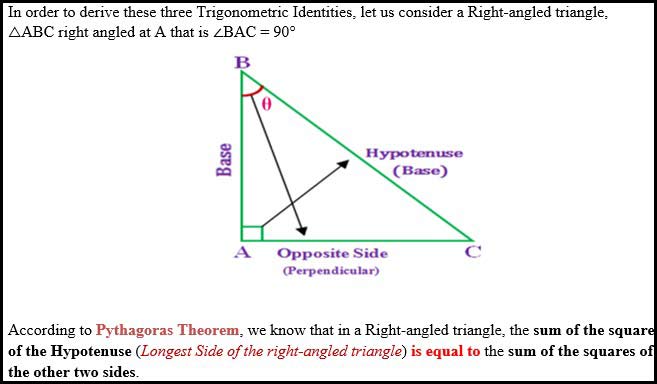





2 thoughts on “Trigonometric Identities and its Derivation”